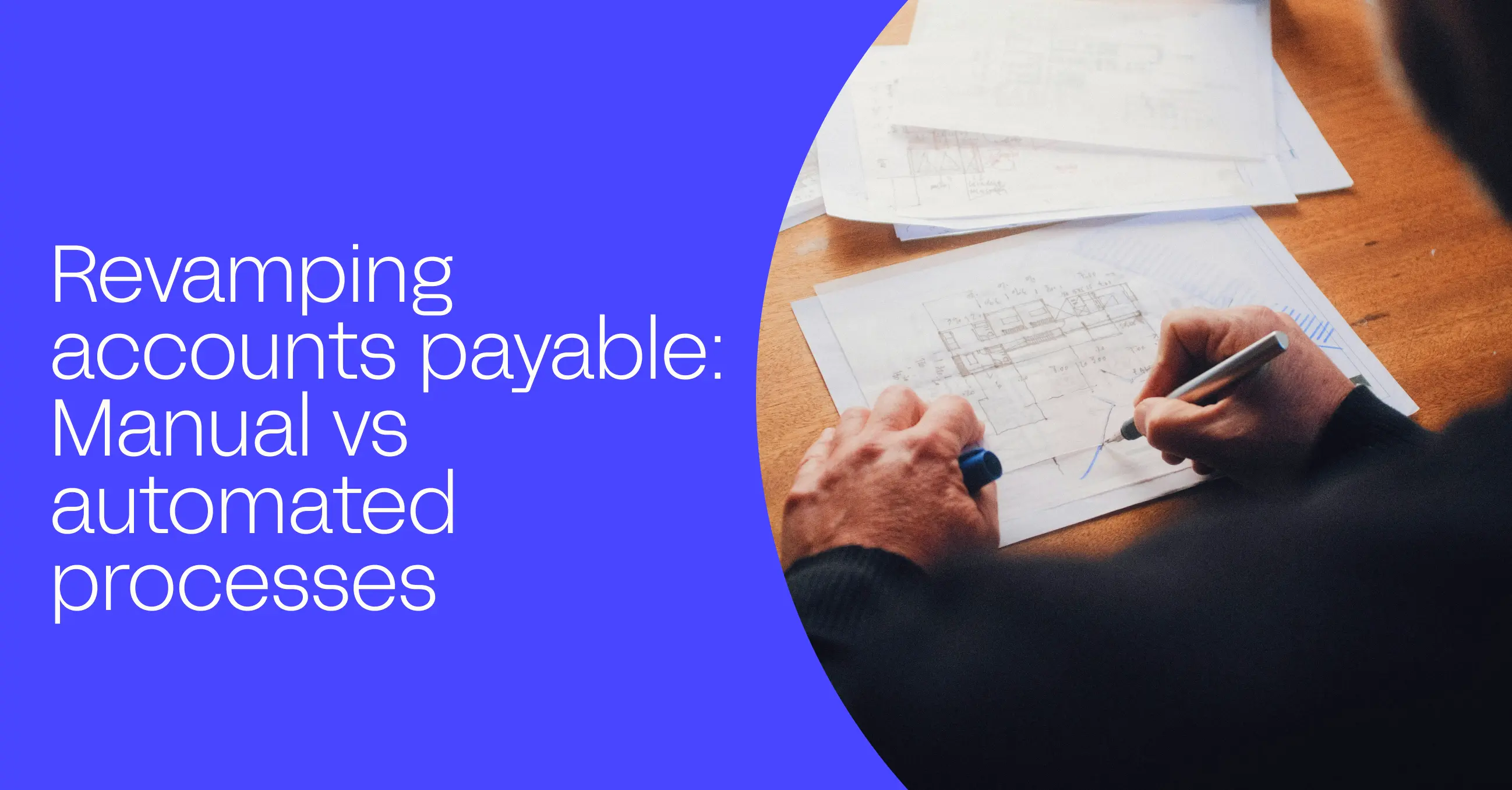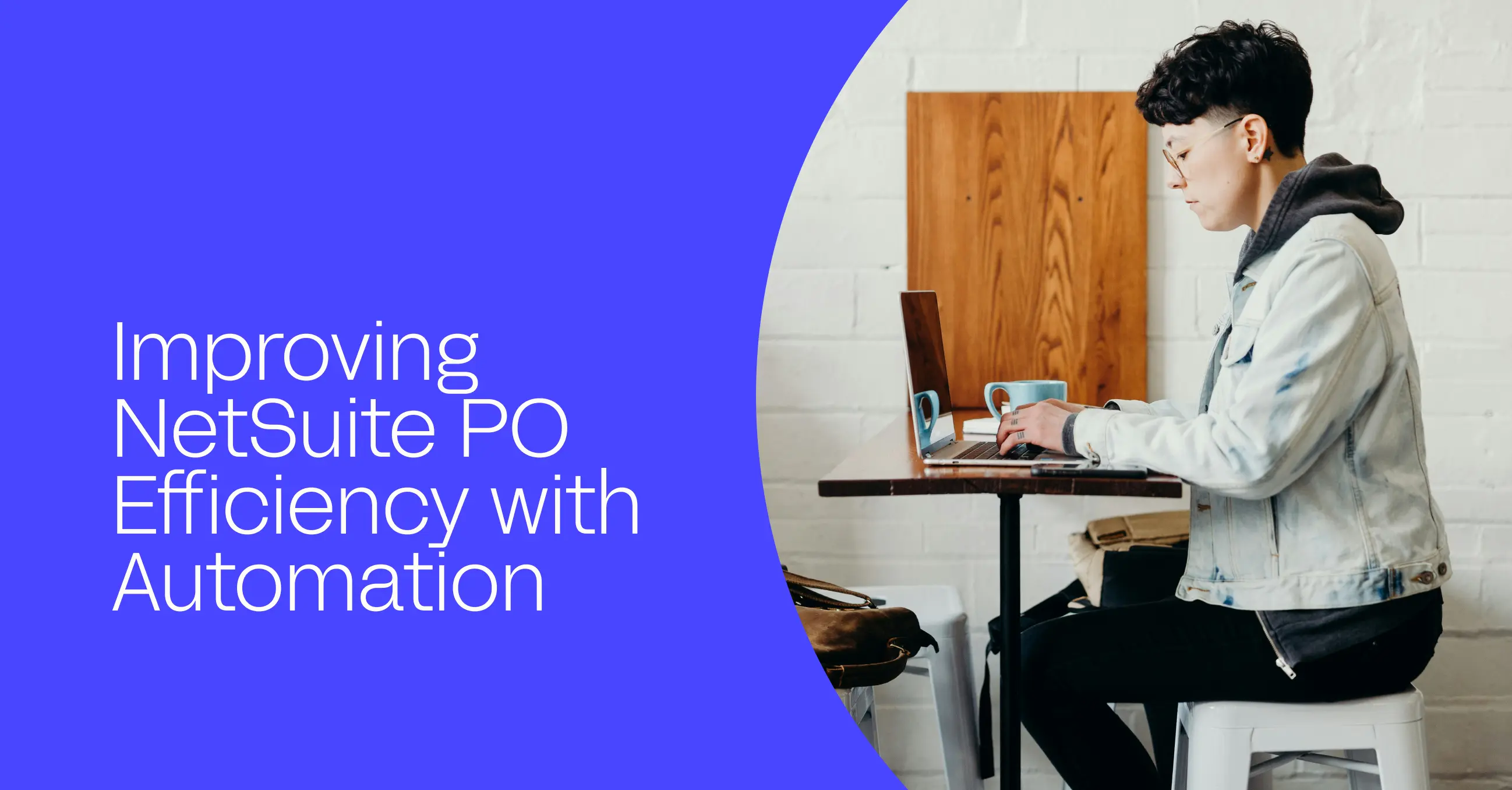Managing accounts payable (AP) can be a burden for any organization. The traditional manual approach to handling AP is often fraught with bottlenecks, human errors, and a lack of visibility into financial operations. Unsurprisingly, many companies are considering transitioning from manual to automated processes, which can free you from these tedious tasks.
In this article, we’ll explore the benefits of revamping your AP system and highlight the potential pitfalls to avoid during this transformation. By the end, you’ll understand how transitioning to an automated AP process can revolutionize your AP department, improve efficiency, and save costs in the long run.
The traditional manual AP process
Let’s discuss the traditional, manual process of handling accounts payable. You may already know how time-consuming and error-prone these old-school methods can be. The cost implications of these manual processes are also a significant factor to consider.
Challenges of manual AP processes
Manual processes in accounts payable present challenges that hinder efficiency and productivity. As you grapple with manual AP, you’ll likely encounter the drag of paper-based or spreadsheet-based processes.
-
Manual tasks: These tasks are time-consuming and prone to human error. Your teams are stuck doing repetitive, time-consuming work instead of high-impact strategic work.
-
Paper-based or spreadsheet-based processes: These are inherently inefficient. Documents can easily be misplaced, requiring additional time and resources to locate or recreate them. Combined with remote work or multiple office locations, knowing which bills need attention and which have already been paid becomes a challenge.
-
Manual errors: These are inevitable in any manual processing. They can result in inaccuracies that affect financial forecasting and decision-making. The monotony of data entry leads to entry errors that ripple through your entire system.
-
Inefficient processes: These stem from the limitations of manual operations. You’re often forced to operate at the speed of your slowest process, which can stifle growth and innovation.
Time consumption in manual AP
Unsurprisingly, the time consumed in manual AP is considerably higher than in automated systems, largely due to repetitive tasks and the need for document management. Within your payables department, each bill and payment approval requires a lengthy payment process involving communication with approvers and payment authorization. These tedious tasks not only eat up valuable time but also increase the risk of late payments.
Considering the time spent managing financial statements and tracking down documents, the manual process is a time-consuming bottleneck. In a tech-savvy world where efficiency is king, sticking to an outdated payable process can hamper your business’s growth. It indicates that the traditional manual process is in dire need of a revamp.
The error rate in manual AP
Beyond the considerable time drain, another glaring issue with the traditional manual process is its high error rate. With manual AP, the accounting process involves time-consuming bill coding, a task your finance team may find challenging. Mistakes can slip through, leading to miscalculations or even late payment penalties.
The common challenges include:
-
Incorrect data entry: Manual entry can lead to typos and misinterpretations.
-
Lost invoices: Invoices may be lost in busy email inboxes, causing delays in payment processing.
-
Duplicate payments: Overlooking a paid invoice could result in duplicate payments.
-
Late payments: Delays in invoice processing can lead to late payments and penalties.
Process improvement is essential to avoid these issues. Revamping your AP process could reduce errors and improve efficiency.
Hidden costs of manual AP
With a traditionally manual process, you’re juggling invoices, risking errors, and grappling with substantial financial implications. Manual methods increase processing costs due to the labor-intensive nature of the task. Labor costs can skyrocket as payable teams spend hours on invoice processes and bill payments.
These extra costs weigh heavily on your financial processes, making the cycle accounts payable process more expensive than necessary. But there’s more to it. The potential for human error in manual methods can lead to costly mistakes that further inflate these costs. You’re not just paying for labor – you’re paying for the inefficiencies and potential mistakes inherent in manual systems. So, as you consider revamping your processes, think about the financial impact of sticking with the old ways.
Exploring the Automated AP process
Imagine the benefits of automation, streamlining payment systems to save time and resources while sidestepping common pitfalls that could cost you dearly. Let’s explore this modern automated process that’s set to catapult your financial procedures into a new era.
Benefits of automated AP
Embracing automation in your accounts payable process can greatly empower you, offering benefits like enhanced accuracy, reduced costs, and improved efficiency. This modernization, often achieved through payable automation software, is a pivotal step toward taking control of your operations.
Here are the four key benefits of automation:
-
Enhanced accuracy: AP automation improves data accuracy, minimizing human error in payable processing.
-
Cost reduction: Automation software reduces overhead costs associated with manual processing and lets you scale your payables without adding headcount.
-
Improved efficiency: Payables automation accelerates financial transactions, making your business more efficient.
-
Real-time reporting: Automation solutions provide real-time reporting, allowing you to access up-to-the-minute data on your payables, allowing for more accurate and timely decision-making. This feature can have a significant impact on strategic decisions.
Investing in financial software for automation is a strategic move, revolutionizing your traditional payable systems and offering tangible benefits of automation.
The magic of automated systems comes into play here. Leveraging technologies such as optical character recognition (OCR), these systems effortlessly convert invoices into bills with suggested coding. This not only speeds up the invoice processing time but also minimizes the risk of human error, giving you confidence in the reliability of these systems.
Automated systems allow for faster and more accurate data entry. With manual processes, there is always a risk of mistyping or misplacing information, leading to costly errors. Automated systems eliminate these risks by automatically capturing and processing invoice information, reducing the chances of data entry mistakes.
Another advantage of automated AP is improved visibility and transparency. A manual system can be challenging to track invoices, payments, and outstanding balances. However, with an automated system, you can easily access real-time data and generate reports to gain insights into your payables.
Automated systems enable faster payment processing. Manual processes often involve multiple steps, such as printing, signing, and mailing checks, which can cause delays. By automating these tasks, payments can be processed and sent electronically, reducing the time it takes for suppliers to receive their funds.
Automated accounts payable processes also offer cost savings. Manual processes require significant time spent on data entry in multiple systems, chasing approvals, manually reconciling payments, and more. Automating these processes can reduce labor costs and allow staff to focus on more strategic tasks.
Additionally, automated systems provide better control and compliance. They can enforce approval workflows, ensure adherence to payment terms, and detect discrepancies and fraudulent activities. Manual processes can be prone to human error and oversight, making it easier for unauthorized payments or duplicate invoices to slip through the cracks.
With automated systems, strict controls – such as segregation of duties and dual approval processes – can be implemented to minimize the risk of fraud and ensure compliance with company policies and regulatory requirements.
Some businesses still rely on manual methods despite the clear advantages of automated accounts payable processes. This could be due to various reasons, such as budget constraints, resistance to change, or the belief that manual processes offer more control.
However, you have to consider the drawbacks of manual accounts payable processes. They are time-consuming and prone to delays, errors, and inefficiencies. Manual data entry leaves room for mistakes, and searching for paper documents or verifying information can be tedious, wasting valuable time that could be better spent on other business initiatives. Today’s AP software is affordable, easy to use, and provides more flexibility and controls than manual processes.
Manual AP’s lack of visibility and real-time reporting can impede decision-making and hinder accurate financial forecasting. Companies may struggle to stay on top of their cash flow, outstanding liabilities, and supplier relationships without quick access to up-to-date information.
The transition to automated systems to revamp your accounts payable processes is worth considering.
When to move from manual AP to automated AP
Shifting from manual to automated accounts payable can propel your business toward enhanced operational efficiency and financial accuracy. With automated AP, the debate about manual vs. automated processes becomes a thing of the past. It’s critical to know when your company should make this shift.
Consider these factors:
-
Number of payments: If you’re paying over 100 payments monthly, it might be a good time to switch because the number of payables is overwhelming for your team.
-
Human intervention: When human error becomes a recurring issue in the finance department, introducing automated systems can reduce mistakes and improve productivity.
-
Unhappy vendors: If your vendors are less willing to do business with you due to slow payments, switching to automated AP can speed up the payment process and potentially get you payment discounts due to the improved and dependable payment speeds.
Automate AP with Routable
Automated invoice processing and payments, approval flows, compliance, and more. Routable is 30% less expensive than the competition, giving you all the best features at a fraction of the cost.
-
Reclaim your time with AP Automation: With an easy-to-use interface, you can eliminate time spent on manual bill coding, complicated approvals, and reconciliation.
-
Real-time, two-way sync: Ensure all data remains up-to-date with your accounting software, removing the need for manual reconciliation and making payments a breeze. Integrate with Oracle NetSuite, Sage Intacct, QuickBooks Online, Xero, and more.
-
Send faster payments: Send payments faster with tools like automated reminders, early payments, and flexible payment methods. Routable supports 4 ACH speeds, 8 check speeds, and real-time payments.
-
Send thousands of payments in minutes: Make thousands of payments worldwide fast with our no-code CSV upload, or use the Routable API to craft the payout experience of your dreams.
Learn how to transform your business with AP Automation by downloading our ebook.
FAQs
What is manual AP processing?
Manual AP processing refers to the traditional method of handling accounts payable tasks manually, such as entering data, processing invoices, and making payments. It involves manual data entry, paper documents, and limited visibility, making it prone to errors and inefficiencies. Transitioning to automated AP processes can streamline operations, reduce errors, and provide real-time insights.
What are the steps in the accounts payable process?
The accounts payable process generally includes receiving invoices, verifying them for accuracy, obtaining approval, and paying vendors. Other steps may include recording transactions, reconciling accounts, and reporting financial data. Transitioning from manual to automated accounts payable processes can streamline these steps, improving efficiency and reducing errors.
What is the difference between manual and automated accounts payable?
Manual accounts payable involves handling tasks manually, such as data entry and processing paper documents, which can lead to errors and inefficiencies. Automated accounts payable, on the other hand, utilizes technology to streamline processes, reduce errors, and improve operational efficiency.
What is the AP workflow process?
The AP workflow process refers to the steps in accounts payable operations, including receiving invoices, verification, approval, and vendor payment. Transitioning from manual to automated accounts payable streamlines this process, enhancing efficiency and reducing errors. Automated AP systems utilize technology to automate tasks and provide real-time visibility into financial data.
What is the typical AP workflow?
The typical AP workflow includes receiving invoices, verifying their accuracy, obtaining approval, and paying vendors. Transitioning from manual to automated accounts payable streamlines this process, improving efficiency and reducing errors. It involves utilizing technology to automate tasks and provide real-time visibility into financial data.
Conclusion
Don’t let your business drown in a sea of paper invoices. Embrace automated AP systems to navigate the waves of financial management effortlessly. The benefits are undeniable—accuracy, efficiency, and financial control at your fingertips.


